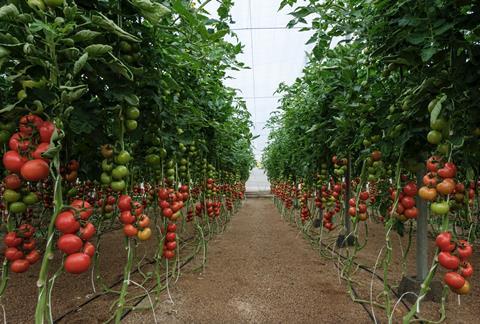Ruud Kaagman, Syngenta Vegetable Seeds global crop unit head tomato, tells Fruitnet that the category continues to innovate, evolve and grow despite the challenge of ToBRFV
Where is Syngenta’s current focus when it comes to the tomato category?

Ruud Kaagman: Syngenta has been actively breeding in all major tomato segments and growing methods. From high-technology greenhouses to open field production, growers need solutions wherever they are and for any of the unique challenges and diseases they face.
Some of this research includes future-ready production, ready for mechanical harvesting and AI. We’re continually sharing these insights with our growers to help them prepare for future challenges and opportunities.
Obviously a lot of the focus right now is on ToBRFV resistance. What have you been doing in this area?
RK: Tomato Brown Rugose Fruit Virus (ToBRFV) represents the biggest threat to tomato productivity today: it diminishes yields up to 100 per cent, damages fruit quality, and is incredibly expensive to remove from greenhouses.
We know this is top-of-mind for growers around the world, and we’ve been dedicated to finding solutions since it was discovered in 2015.
We introduced our first resistant varieties in 2020, beefsteak tomatoes, but we haven’t slowed down since. By the end of 2023 we had 15 tomato varieties on the market with ToBRFV resistance, including beef, cluster, and baby plum/snacking tomatoes.
In 2024, we will launch many more resistant varieties. We’re actively trialling four new rootstock varieties for commercialisation this year, where growers will have access to ToBRFV-resistant rootstock and ToBRFV-resistant scion.
In addition to resistance on the market today, we’ll continue to integrate ToBRFV resistance into all kinds of tomatoes and growing styles and continue researching more modes of action to protect this important crop.
Is the tomato market still a strong one globally?
RK: The tomato still one of the most eaten vegetables around the world, and we do not see this changing. In fact, there is still a growing demand for small types as more countries adopt these types as a healthy snack.
There is also an ongoing trend in increasing the acreage of greenhouse tomatoes, especially as it allows growers to produce closer to urban areas and significantly improve yield, consistency in quality, and strongly improve the ecological footprint due to less pesticide use and less water usage.
We see these developments in Asian countries, Central Asia, Dubai, and Sudi. Across the globe, the demand for tomatoes will continue to grow due to new innovations for consumers.
This is an extract from an interview in the upcoming Fresh Focus Tomato special, produced ahead of the Global Tomato Congress, which takes place on 14-15 May at the Fokker Terminal, The Hague



